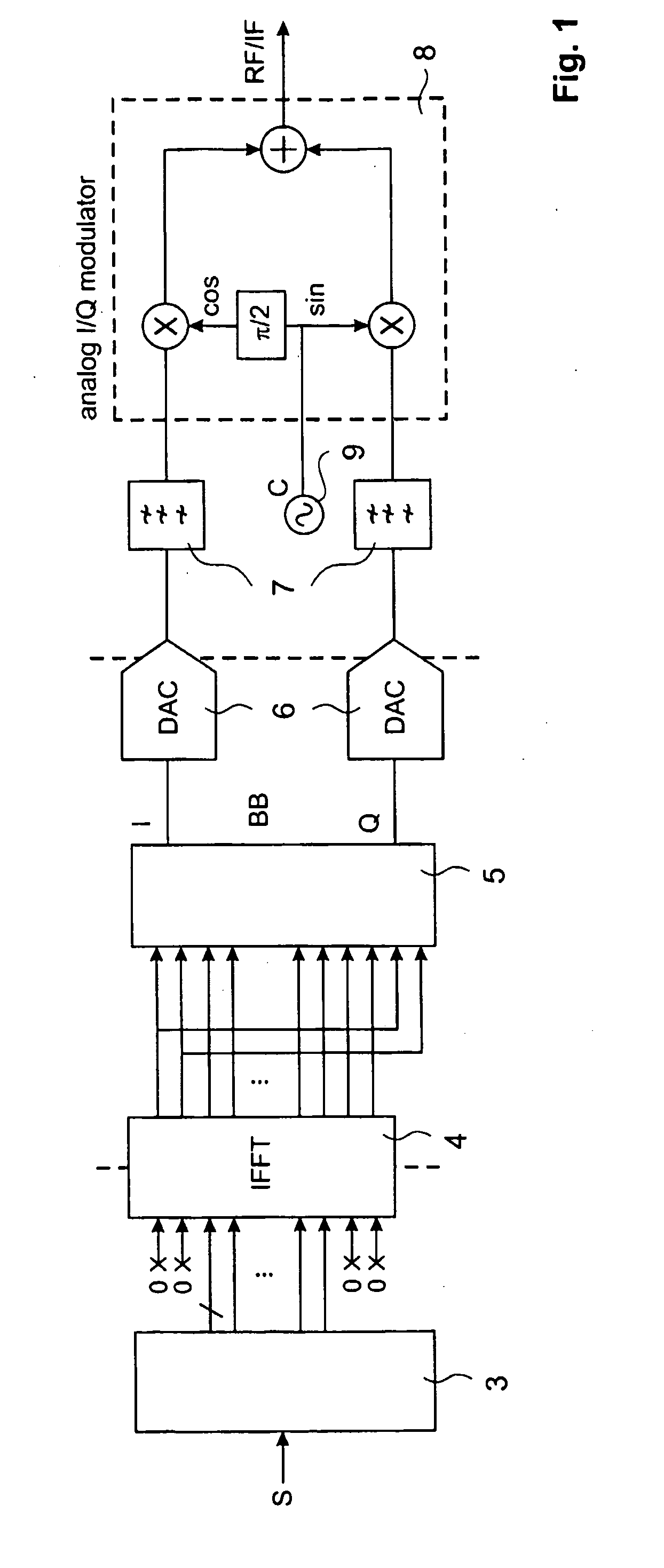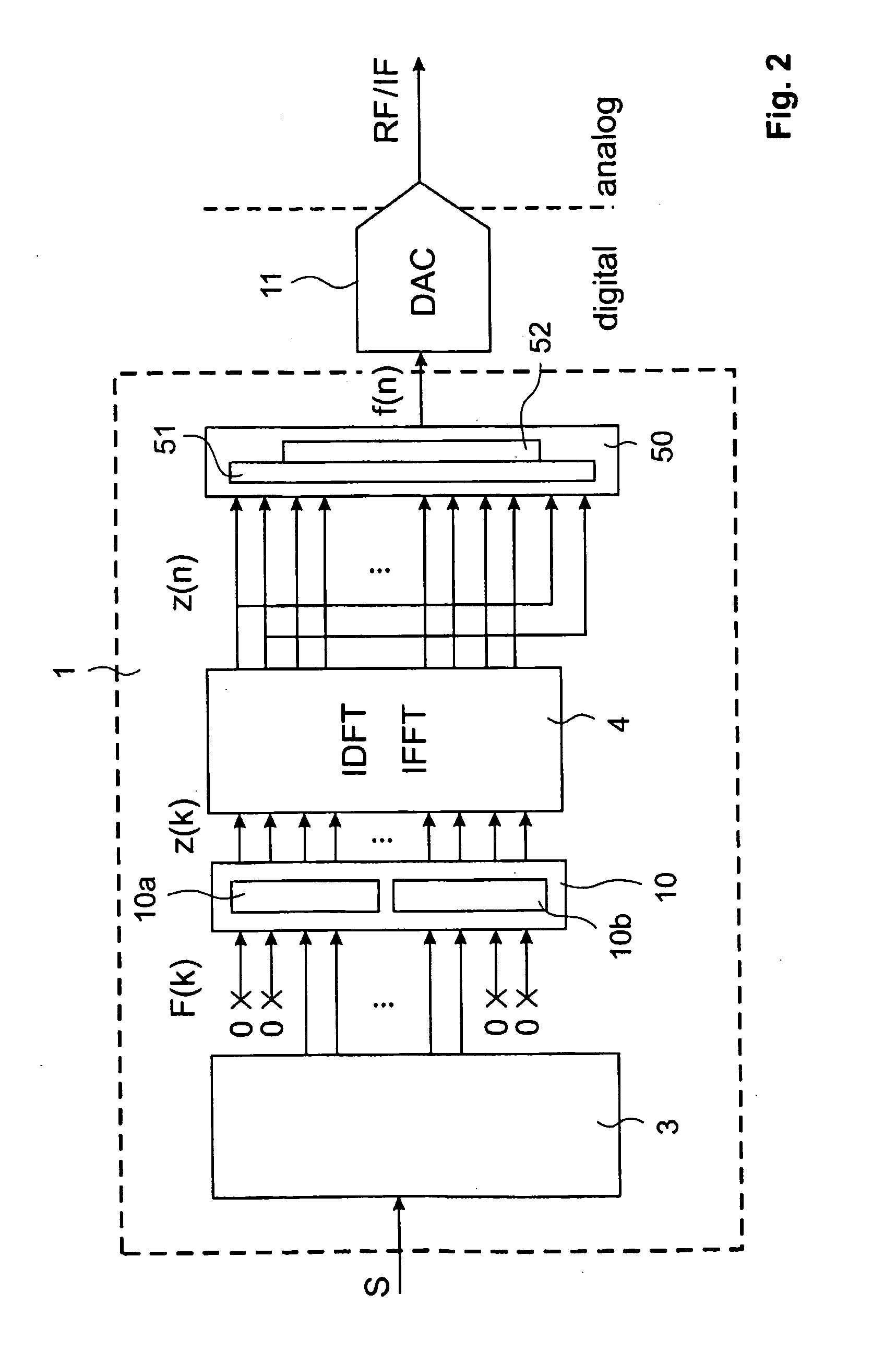Modulation and demodulation of OFDM signals
a modulation and demodulation technology, applied in the field of modulation and demodulation of ofdm signals, can solve the problems of inability to accurately calculate the i/q imbalance, the in-phase and quadrature components are not balanced, etc., to achieve the effect of efficient processing
- Summary
- Abstract
- Description
- Claims
- Application Information
AI Technical Summary
Benefits of technology
Problems solved by technology
Method used
Image
Examples
Embodiment Construction
[0032]In FIG. 1, a typical implementation of an OFDM modulator according to the prior art is depicted. The OFDM modulator comprises a modulation mapping unit 3. A stream S of incoming data bits is encoded to a number of complex symbols using phase-shift-keying (BPSK, QPSK) or quadrature-amplitude-modulation (16-QAM, 64-QAM) and mapped onto K data sub-carriers out of N sub-carriers by the modulation mapping unit 3. Additional sub-carriers can be reserved for pilot (training) tones while the DC sub-carrier is usually unused to avoid difficulties with converter offsets. The remaining sub-carriers are unused and produce spectral guard bands to reduce out-off-band interference and to relax radio-frontend filter requirements.
[0033]These so-called sub-carrier symbols are then fed into an IFFT unit 4 to perform a N point inverse discrete Fourier transformation (IDFT), thereby generating a complex baseband (BB) OFDM signal comprising an in-phase (I) and a quadrature (Q) component of complex ...
PUM
 Login to View More
Login to View More Abstract
Description
Claims
Application Information
 Login to View More
Login to View More - R&D
- Intellectual Property
- Life Sciences
- Materials
- Tech Scout
- Unparalleled Data Quality
- Higher Quality Content
- 60% Fewer Hallucinations
Browse by: Latest US Patents, China's latest patents, Technical Efficacy Thesaurus, Application Domain, Technology Topic, Popular Technical Reports.
© 2025 PatSnap. All rights reserved.Legal|Privacy policy|Modern Slavery Act Transparency Statement|Sitemap|About US| Contact US: help@patsnap.com



